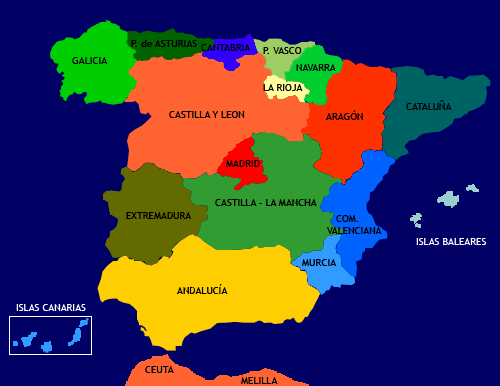ENLACE PARA DESCARGAR EL GUIÓN DEL TRABAJO DE INVESTIGACIÓN POBLACIÓN UE
Imagen de una parte del guión; pincha en el enlace para ver el documento completo.
domingo, 28 de mayo de 2017
lunes, 22 de mayo de 2017
7 Billion: How Did We Get So Big So Fast?
It was just over two centuries ago that the global population was 1 billion — in 1804. But better medicine and improved agriculture resulted in higher life expectancy for children, dramatically increasing the world population, especially in the West.
As higher standards of living and better health care are reaching more parts of the world, the rates of fertility — and population growth — have started to slow down, though the population will continue to grow for the foreseeable future.
viernes, 21 de abril de 2017
martes, 18 de abril de 2017
Juega y estudia con mapas interactivos: Provincias y comunidades autónomas de España
https://mapasinteractivos.didactalia.net/comunidad/mapasflashinteractivos/recurso/provincias-de-espaa/108fb9ee-6654-465a-a9ed-e84be977a27a
http://serbal.pntic.mec.es/ealg0027/esprovin1e.html
http://www.cerebriti.com/juegos-de-geografia/mapa-mudo--provincias-de-espana#.WPY6edI18dU
http://serbal.pntic.mec.es/ealg0027/esprovin3eb.html
http://serbal.pntic.mec.es/ealg0027/esprovin1e.html
http://www.cerebriti.com/juegos-de-geografia/mapa-mudo--provincias-de-espana#.WPY6edI18dU
http://serbal.pntic.mec.es/ealg0027/esprovin3eb.html
domingo, 16 de abril de 2017
Spain
Territorial organization
After the Constitution, Spain is divided into 17 Autonomous Communities, 50 provinces and two Autonomous Cities: Ceuta and Melilla.
domingo, 2 de abril de 2017
domingo, 19 de marzo de 2017
VEGETATION IN THE CANARY ISLANDS
There are six major zones of vegetation on the island, according to altitude and directional aspect.
1) and 2) Sea level and Coastal scrub (Lower Xerophytic Zone)
from 0 to 50 m. and from 50 to 300m. A xerophyte is a plant adapted for growth under dry conditions. This area of Tenerife is ideal for them. Examples include spurges, cactus spurge and wax plants...
3) Thermophile Forests
300 - 500 m (northern slope) and 300 - 1000 m (southern slope). A "thermophile" is described as an organism that thrives at a temperature of 50° or higher. This is an area of moderate temperatures and rainfall and has been adversely affected by human activity. It contains many endemic species such as juniper, palm trees and the famous dragon trees....
4) Laurel Forest (Monteverde or Laurisilva)
500 - 1500 m. (northern slope)
This is a zone characterised by frequent rainfall and mist (laurisilva forest). Many large trees, with abundant undergrowth of bushes, herbaceous plants and ferns. Plants such as laurels, holly..
5) Pine Forest
1000 - 2000 m.
Open pine forest, with thin, unvaried undergrowth. Examples of Canary Island pine, broom and rock rose.
6) High Mountain scrubland
Over 2000 m. (only in Tenerife, La Palma and Gran Canaria)
Dry climate, strong sunlight and extremes of day and night temperatures. Flora well adapted to the conditions. Many endemic species here. An area of great scientific importance. Examples of endemic flora include Vipers bugloss, Teide white broom and Teide violet.
Suscribirse a:
Entradas (Atom)






